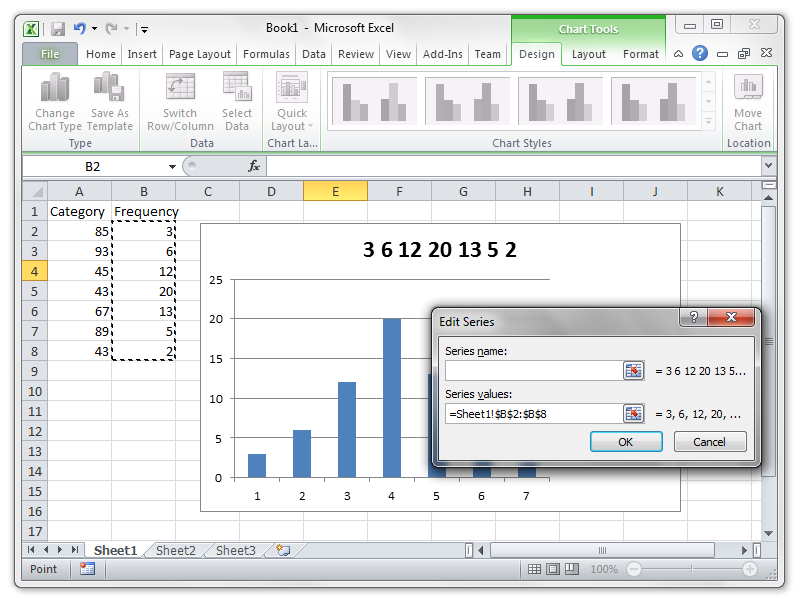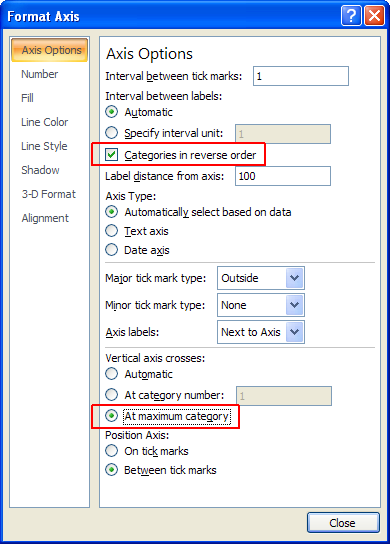

- FORMAT AXIS WON'T APPEAR EXCEL FOR MAC UPDATE
- FORMAT AXIS WON'T APPEAR EXCEL FOR MAC PORTABLE
- FORMAT AXIS WON'T APPEAR EXCEL FOR MAC CODE
Here is the VBA code to copy into the Module. The code for UDFs must be within a standard module to work. The Visual Basic Editor window will open, click Insert -> ModuleĪdd the code below to the Module as shown. To create the UDF click Developer -> Visual Basic (or shortcut ALT + F11). Right-click on a blank part of the ribbon and select Customize the Ribbon… from the menuįrom the Excel Options window click Customize Ribbon, enable the Developer option then click OK.
FORMAT AXIS WON'T APPEAR EXCEL FOR MAC UPDATE
Whether these values are typed in the cell or created using formulas, they will update the chart. The values in the cell are automatically applied to the chart. The animated gif below shows the solution in action. Thankfully, the minimum and maximum values of the chart axis are controllable using a UDF. For example, it is possible to change a worksheet’s tab color, or to change a chart title (next week’s post). Whether on purpose or by accident, Microsoft have made it possible to control various objects with UDFs. UDF’s are intended to be custom worksheet functions to calculate a cell value. User Defined Functions (UDFs for short) are just like normal Excel functions, such as VLOOKUP or SUM, but they have been created using VBA.
FORMAT AXIS WON'T APPEAR EXCEL FOR MAC PORTABLE
Easily portable between different worksheets.no button clicking, but updates automatically when the worksheet recalculates Does not require user interaction – i.e.Updates automatically whenever data changes.If you’re not familiar with VBA, don’t worry, I’ll talk you through it step-by-step. Hopefully, by the end of this post, you too can share in the automatic cell linked bliss I now experience. Link that formula to a cell and suddenly it is possible to set the chart axis based on a cell value. Below you’ll find the result of that tinkering a formula which exists on the worksheet to control the min and max values of a chart axis. I turned to my old friend VBA, and started to tinker. I decided to build a more dynamic solution. There are various chart objects we can link to worksheet cells source data, chart titles and data labels can all be linked to cells, but the chart axis is set by hardcoding a number into the Format Axis options window. It only takes a few seconds, but all that time starts to add up.

It’s such a tedious task, and I know I’ll be doing it again at a future point. I can't think of a reason why they would limit the resolution of the x axis to one day.“ Not again…” I think to myself every time I change the minimum and maximum values of a chart axis. The only workaround I have found is to use the xy/scatter plot which (arguably) is not the natural chart type for this data.

Axis type of "auto" and "date" have the same effect. In all versions of Excel I currently have access to, under "format axis" the base unit, major and minor units, are selected via drop-down box, and you can pick day, week, or year, nothing else. It has been a few years since I've used earlier versions of Excel but I seem to remember the problem was present in those versions too. The Fred Pryor page referenced above shows that "as of Excel 2013" all the data on a single day will show the same x value in a chart, however I'm using both Excel 2011 Mac and Excel 2007 Windows and the problem (yes that is the correct word) exists in those versions. However, data sets spanning more than a day can't have a resolution finer than one day. I've analysed many data sets using a line chart with fine resolution (e.g.


 0 kommentar(er)
0 kommentar(er)
